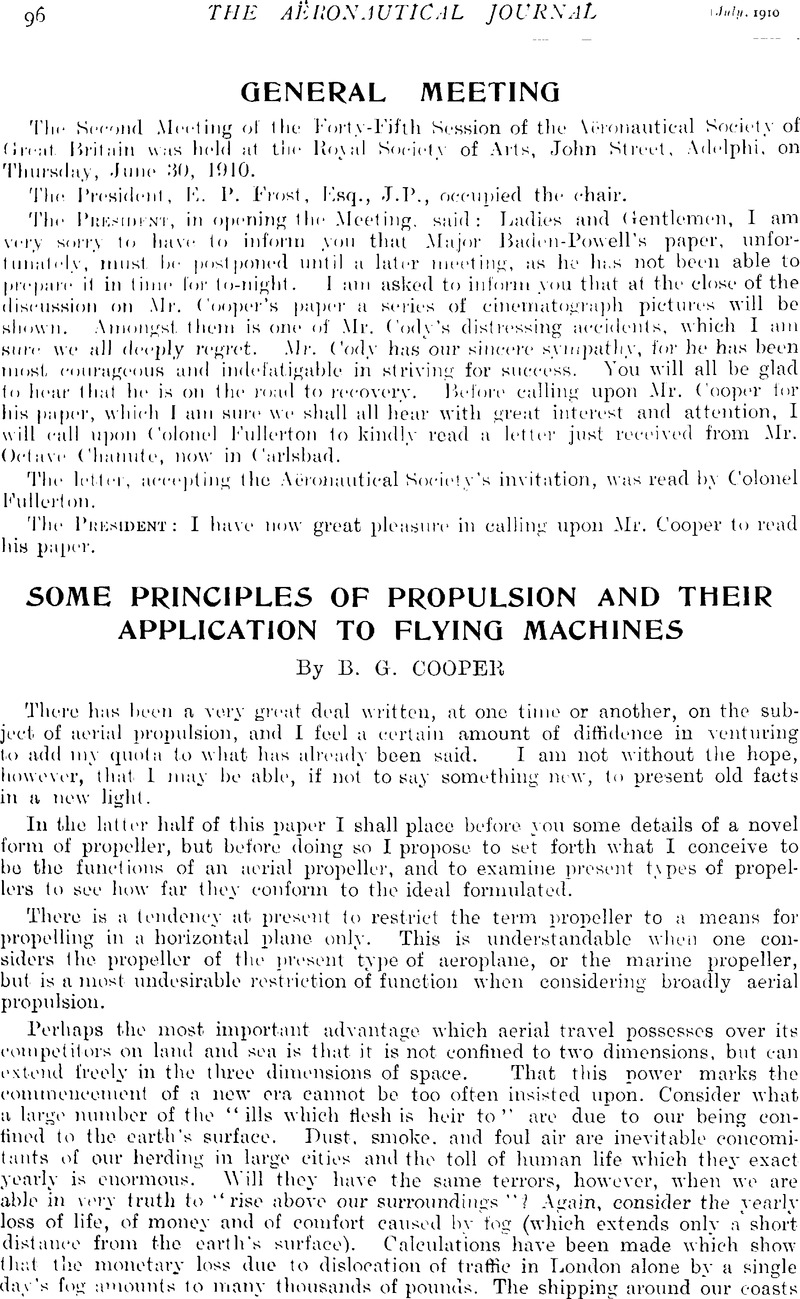No CrossRef data available.
Published online by Cambridge University Press: 24 August 2017

Note page 97 * This is usually explained on the ground that the screw accelerates the feed stream not only during its passage through the propeller but also before it reaches the propeller, the resultant thrust being thus attenuated.
Note page 98 * The reserve of lifting power prossessed by natural flyers is in many cases remarkable. The female bat, for instance during the period of gestation, is not markedly handicapped by tne considerable extra weight of her young.
Tables are often given showing the weight carried per unit area of supporting surface of birds and insects. As these tallies are compiled by dividing the weight of the animal into its wing area they are merely tables of minimum weight carried, and often afford blit sliglit indication of the maximum capacity for weight lifting. It is most important to bear this fact in mind when comparing natural with artificial flyers Dr. Pettigrew made some interesting experiments to determine the effect of removing portions of the wing from certain insects and birds. These are too long to detail here; they may be referred to in his book on Animal I ocomotion. Two most remarkable facts arrived at are that the posterior two-thirds of the wings of a blue-bottle fly may be removed without impairing flight, and that either pair of wings of a dragon fly may be dispensed with.
Note page 104 * Shortly after M. Bleriot flew the Channel, a claim was advanced on behalf of the propeller which he used, that it had only 15 per cent. slip. It seemed obvious, from the emphasis which was placed on this statement, that it was intended to suggest that the efficiency of the propeller was 85 per cent. Many strange conceptions exist on the question of efficiency in relation to slip, but many other factors have to be taken into consideration before a certain percentage of slip can be said to tell us what the propulsive efficiency of a propeller is. This slip, as given, was doubtless the difference between the observed speed of advance of the propeller and that calculated as possible by multiplying the pitch by the revolutions. If this pitch was calculated on the angle of the so-called acting face of the blade, ignoring the rounded back, as is often done, it was of course, understated.